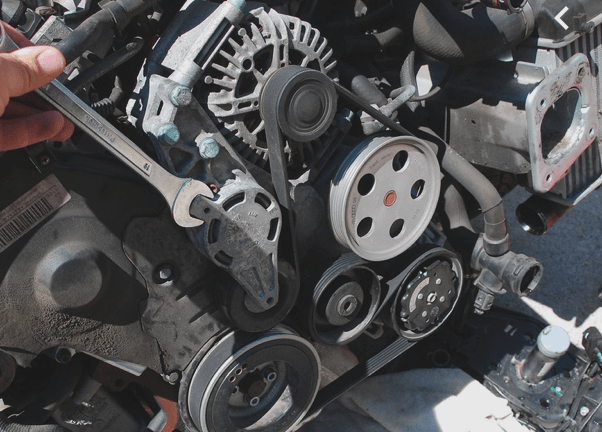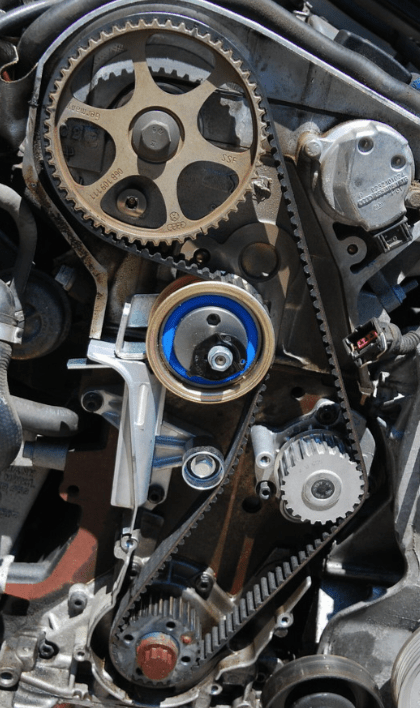Both the serpentine belt and timing belt play critical roles in the operation of your vehicle. They have different functions and no operational overlap in these functions at all. They are both made from rubber, and are vital to the continued operation of the vehicle.
Timing Belt VS Serpentine Belt Differences


Here are the main differences between the serpentine belt vs the timing belt:
- The serpentine belt turns engine accessories.
- The timing belt turns the camshafts and keeps the engine in time.
- They are both made of rubber, but the timing belt is often actually a chain.
- The serpentine belt is much easier to replace than the timing belt.
- When the timing belt fails, often it’ll often damage the rest of the engine. When the serpentine belt fails there is no immediate damage to the engine. If the vehicle is allowed to run long enough without a water pump, it can overheat and blow a head gasket or crack a head.
- Timing Belts are more expensive to replace than a serpentine belt by a wide margin.
- The serpentine belt needs replaced more often than the timing belt.
- The Timing Belt is almost always covered up, where a serpentine belt is always exposed. If you are looking at your engine, the serpentine belt will be the one that is clearly visible, and looped around many different engine accessories.
- A timing belt is smooth, while a timing belt has teeth.
Serpentine Belt
A serpentine belt turns the engine accessories on your vehicle. These could include the water pump, air conditioning pump, power steering, and alternator. If it goes bad (or falls off) your car will no longer have these accessories.
The serpentine belt turns things attached to your engine, while the timing belt turns the upper half of the engine itself. It runs all up and down one side of your engine, clearly exposed, much like a snake. The timing belt will remain hidden at first glance.
Timing Belt
The timing belt is a rubber belt that is attached to the outside of the motor that connects the camshaft(s) to the crankshaft. This keeps the engine in time. If the timing belt fails, the engine will no longer be able to run at all, or it may run very poorly. If the timing belt has jumped just a little bit, the engine may still run (but poorly). If it has jumped a lot or fallen off entirely, then it will be impossible for the engine to run.
Often, a vehicle will be equipped with a timing chain and not a timing belt (see timing belt vs timing chain for more on that). The difference between a timing chain and timing belt is the material that they are made out of. There are benefits to both. More vehicles are equipped with timing chains than belts these days.
Conclusion
The timing belt and serpentine belt both have different, yet vital functions in the operation of your engine. Don’t put off changing the timing belt due to the expense. If it fails, you may end up on the hook for an entirely new engine.
If there is anything that you would like to add, please feel free to leave a comment below. It would be appreciated.
